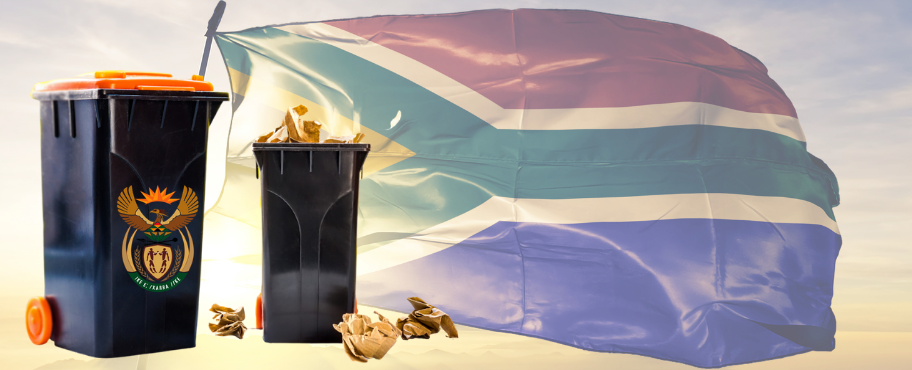It is a known fact that Legislation governing the management of waste in South Africa is constantly evolving as it learns from international best practice, and strives to apply these learnings within the context of our own environment.
With this taken as context, the three key goals of the Waste Act are worth re-visiting;
(a) prevent pollution and ecological degradation;
(b) promote conservation; and
(c) secure ecologically sustainable development and use of natural resource while promoting justifiable economic and social development;
The latest amendment to the Waste Act, which was gazetted into law on 05 November 2020 addresses the stated goals of the above-mentioned Act. Producers of identified products will, within a designated time-frame (within 6 months of publication of the gazette, or within 6 months of commencing operations), be required to implement specified extended producer responsibility (EPR) measures as set out in the Schedule.
The approach adopted through EPR is founded on “product stewardship” as well as the “polluter pays” principles. This will have the effect of extending a producer’s financial or physical responsibility for its product across its product’s life cycle, to the post-consumer stage (including waste disposal).
The targeted recycling rates (for which incremental increases have been stipulated for the various class of products to be achieved over the next 5 years), will necessitate the development and implementation of more effective collection and recycling activities than have been achieved thus far. The benefits to be derived from EPR include the reduction in the use of single-use plastic, reduction of waste in the environment, reduction of waste to landfill, and creation of more jobs in the green sector.
“Producers” now have the responsibility to develop EPR schemes that need to be submitted to Government setting out how they will achieve the stipulated recycling targets. It is abundantly clear that they will need to engage with established recyclers such as WastePlan, in the development of practical solutions for the recovery of their products from post-consumer waste, prior to disposal to landfill.
As a quick guide on the implications of the EPR, a few “questions and answers” have been posed;
Why will recycling rule the waste agenda?
In short, for two reasons:
Firstly, products will need to have higher amounts of recycled material in their content. Secondly, producers will have to take full responsibility for the entire life cycle of their goods, and ensure that they support the circular economy.
So which recyclable materials are affected?
The list of recyclable consumer items is rather exhaustive. It includes, well, just about everything that can be repurposed. Here are some of the top items you should know about:
- plastic packaging and products (including cutlery, cups and garbage bags)
- electronic and electric equipment
- metal, steel, tinplate and aluminium products
- a range of lighting products like lightbulbs, solar and even car lights
- paper products like newspapers and magazines
What sort of targets are we looking at?
- Recycled Content
In line with a raft of strict restrictions, as well as the latest SA Plastics Pact, South Africa is taking a stronger stance on plastic waste. Within the first year 10% of plastic PET beverage bottles must be recycled content; 20% by the fifth year.
Single-use plastic products - goods like food packaging, garbage bags, cups and cutlery - need to be made of 8% recycled material after year one of the scheme; that number also reaching 20% by year five.
Glass packaging needs to contain 20% recycled content after the first year, and 50% by the fifth year.
And so the list goes on. Depending on the product and material, there are specific targets to tip the scales towards recycled consumable goods, both now and into the near future.
- Collection
There are steep collection targets for everything from office paper to PET plastic beverage bottles. More than 70% of these bottles must be collected within a year of the scheme's launch.
Producers of lightbulbs (incandescent filament lights), for example, have to ensure that 50% of all their used bulbs are collected from consumers within the first year of the scheme’s launch. That target will hit 70% after 5 years.
5% of all inoperable LED lights must be collected after the scheme's first year. After five years, the collection rate jumps to 20%.
For these goods and others, their producers are now required by law to ensure their products are being collected, reused and/or repurposed.
I am a manufacturer/distributor/importer of recyclable products. How will this affect me?
My company has the responsibility of developing an EPR scheme that will facilitate the management and collection of our products that currently form part of post-consumer waste that is disposed to landfill. We will need to engage with established specialist Recycling Companies to establish how our specific product can be recovered from the waste.
If the recycling targets for my products are not achieved, we would incur fines and penalties which need to be avoided.
How can I turn this into opportunity?
By partnering with a reliable waste management company, businesses can outsource the tricky stuff to the experts and assist you with achieving your target goals. Companies like WastePlan have the expertise and resources to help navigate this legislative ground and help you comply with the latest regulations.
Contact us to see how we can help your company step into its sustainable future.





